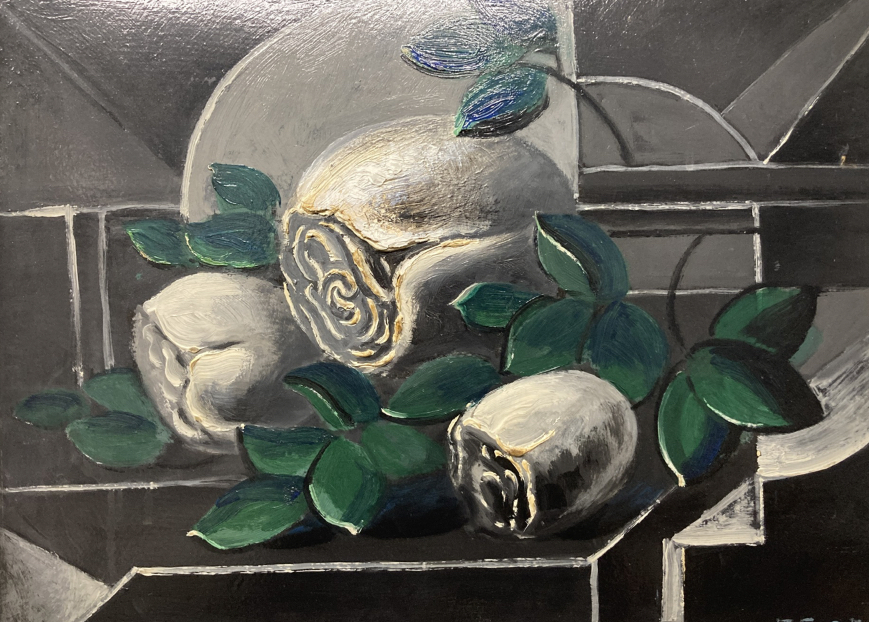In this rose painting from 1925, representational and non-representational painting styles appear to converge equally. Three white roses are depicted, placed against a background of geometric shapes. This abstract background is rendered entirely in shades of grey, while the green leaves of the roses provide a vibrant contrast to the predominant black and white of the work. The roses appear very sculptural; Evard seems to almost want to transform them into a spherical form here. The 1920s were a period for Evard during which he would discover the Concrete-Constructivist painting style, though he continued to use still life as a starting point for a long time. However, he would also remain faithful to representational painting throughout his life. He skillfully unites these two contrasting approaches in this work.
